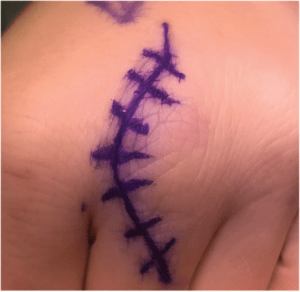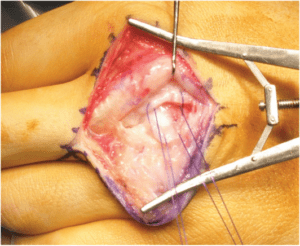Extensor Hood injuries
Injuries to the extensor hood of the hand are quite common among both amateur and professional boxers, causing significant disruptions to training and competition. These injuries account for 16% of all hand and wrist injuries in boxers, and they typically involve damage to the extensor hood, joint capsule, synovitis, or a combination of these issues.
Extensor hood injuries can result in considerable problems with hand function for athletes, with tears in the extensor hood leading to an average of 110 days lost from sports due to the injury. Individuals with these injuries often experience pain upon impact, making it difficult for them to compete, prompting them to seek medical attention.
Understanding Extensor Hood Injuries
Symptoms:
- Pain over the affected MCPJ (knuckle) after forceful punches or repeated impacts.
- Swelling and bruising may occur acutely.
- Palpable tenderness over the extensor hood, with the knuckle feeling soft.
- Possible crepitation (crackling sound) indicating pseudo bursa.
- Reduced flexion, occasional extensor tendon instability during flexion.
Diagnosis:
The diagnosis is primarily clinical, with imaging (dynamic ultrasound or MRI) used in equivocal cases. Imaging may only sometimes provide additional clinical information when a consistent history and examination are present.
Treatment:
Surgery is the primary treatment, especially for athletes. Non-operative treatment may be considered for less demanding populations, especially in the elderly.

Skin incision. A curved longitudinal incision avoids a scar over the striking point of the knuckle.

Capsule repair. The capsule should only be repaired with the metacarpophalangeal joint in 90 degrees of flexion.

Strengthening exercises. After 4 weeks the patient may start isometric contractions
Rehabilitation Process
Post-Surgery:
- Supervised by a hand therapist or physiotherapist.
- Discharged with a bulky bandage.
- Early gentle finger movements within the bandage.
- Active flexion and extension of all finger joints started within the first week.
- Avoid passive forcing of MCPJs into flexion and active power gripping.
Weeks 1-2:
- Active movement of MCPJs with interphalangeal joints in full extension.
- MCPJ extension with interphalangeal joints in flexion.
- Flexion of interphalangeal joints with MCPJs in neutral.
Weeks 4-8:
- Isometric contractions of long flexor tendons.
- Grip strengthening for intrinsic muscles.
Weeks 8-12:
- Progressive active hand and wrist loading.
- Gradual resumption of light impact through the repair.
- Systematic progression from water punching bags to ordinary bags, pads, technical sparring, and eventually open sparring.
In our experience, the period from initial impact to full impact in sparring is around 4–6 weeks, emphasising a gradual and systematic approach to ensure optimal recovery and minimise the risk of adverse reactions at each rehabilitation stage.


